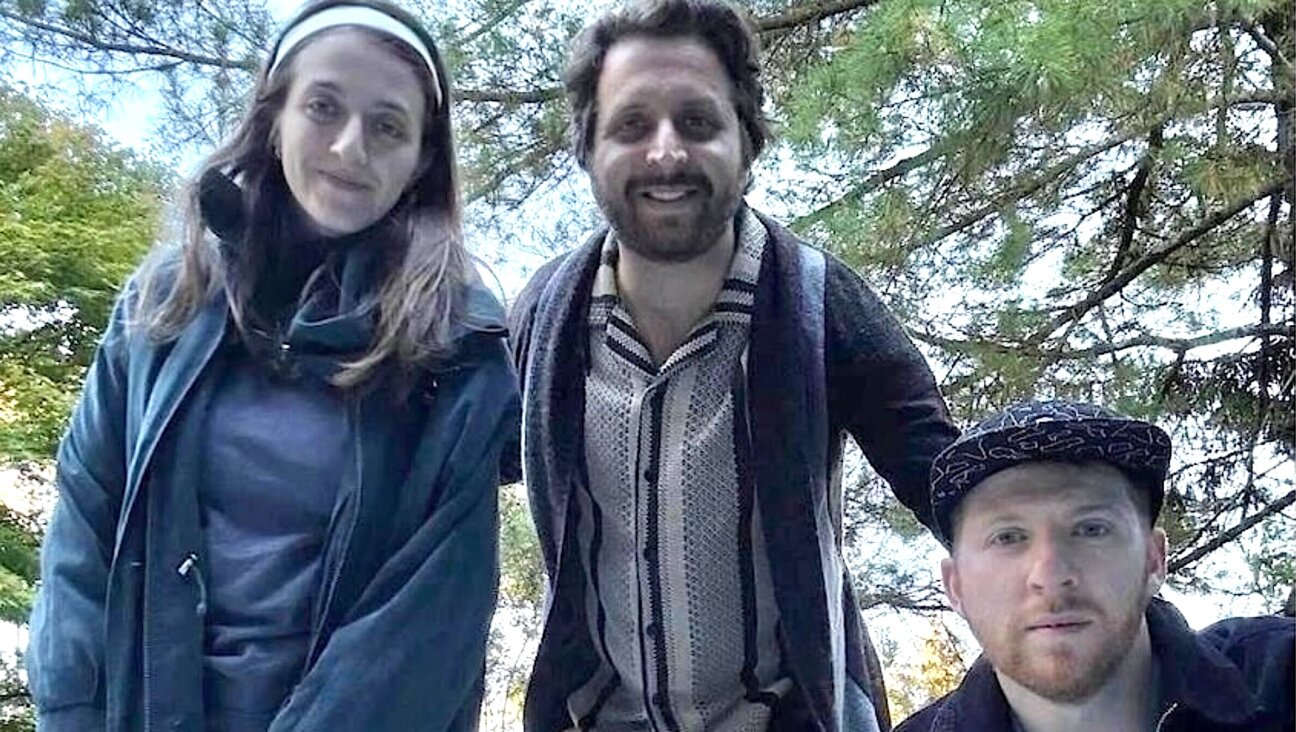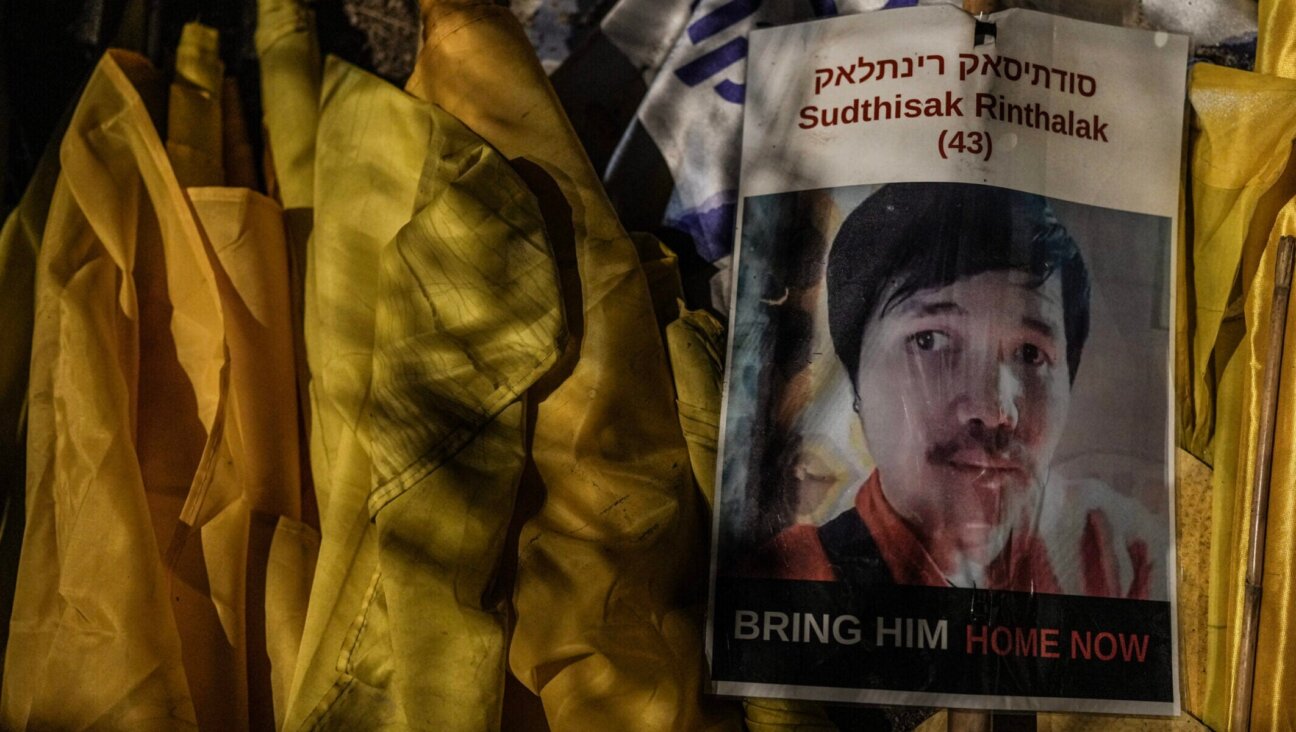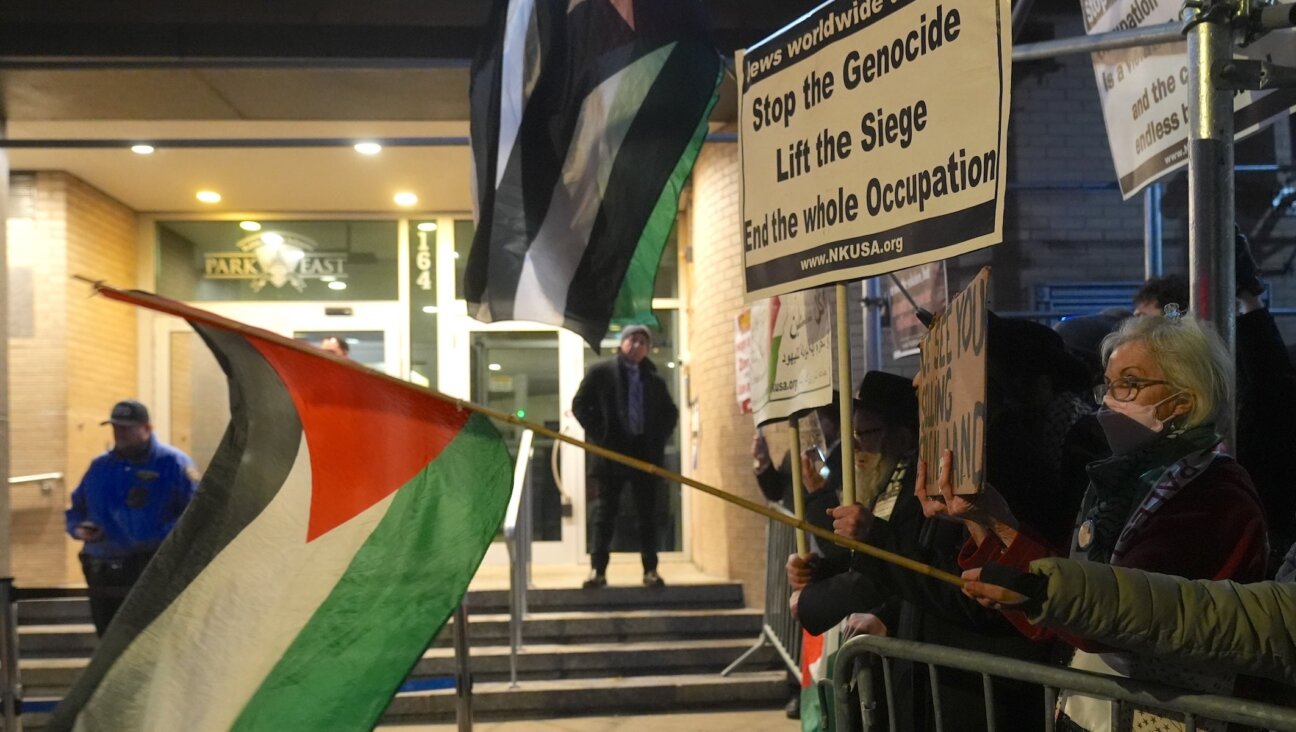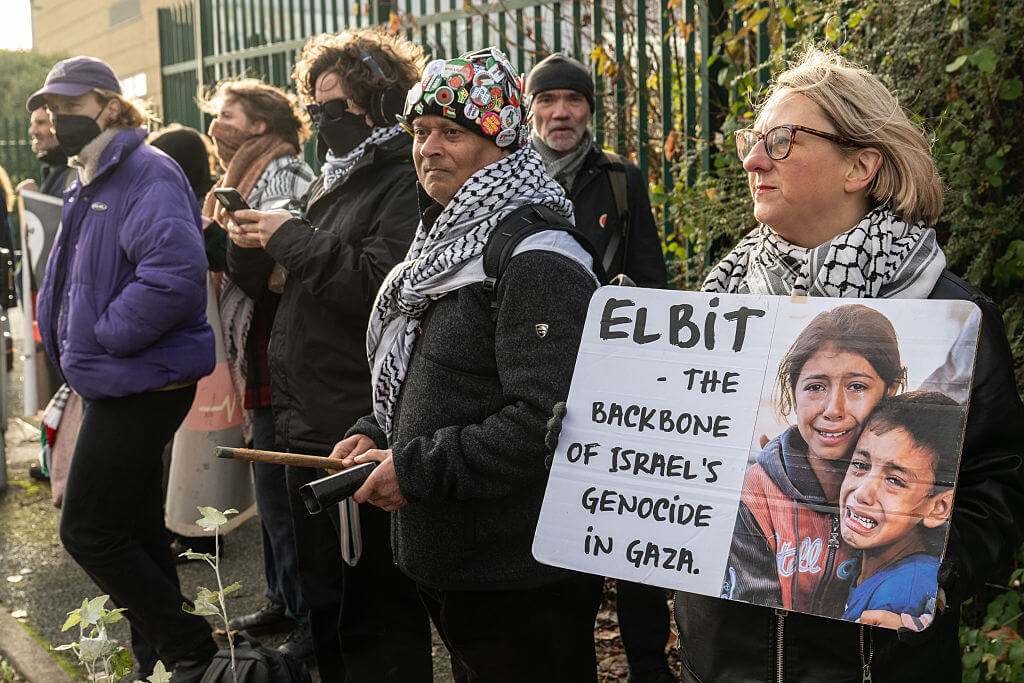Q&A: Director Rachel Harrison Gordon on reliving her bat mitzvah onscreen

Broken Bird is Rachel Harrison Gordon’s directorial debut. Image by courtesy of Rachel Harrison Gordon
Among the many events cancelled by coronavirus in the past months are b’nei mitzvot across the country. Rachel Harrison Gordon’s is just one among them — but it’s also a little different.
For months, Harrison Gordon, a film and business student at NYU, had labored over her first short film, “Broken Bird,” which chronicles the bat mitzvah preparations of Birdie, a biracial black and Jewish teen. Drawing from Harrison Gordon’s own upbringing in suburban New Jersey, the film follows Birdie as she prepares her parsha and wonders whether her father will show up. Lush and moody, the film stars Indigo Hubbard-Salk, a veteran of Spike Lee’s rebooted “She’s Gotta Have It” who told Harrison Gordon that the role inspired her to have her own bat mitzvah.
“Broken Bird” made its world debut at the Berlin International Film Festival, and was scheduled for an American premiere at the now-cancelled SXSW film festival. Now, stateside viewers will have to wait for a virtual opportunity to take it in.
The Forward’s Irene Katz Connelly talked to Harrison Gordon about Hebrew school solidarity and autobiographical art. The following interview was edited for length and clarity.
Irene Katz Connelly: “Broken Bird” is only fourteen minutes long, but it’s a big step forward for Jews of color who don’t often see themselves onscreen. What did you want to accomplish with the film?
Rachel Harrison Gordon: I really didn’t see people who looked like me on screen, but as a child I did seek out movies to process the adult situations I was going through, how my parents were interacting and what they were up to. I felt I didn’t relate to my peers all the time, so I watched all these crazy movies about drugs and alcohol. I hoped that, by making my own film, I could address some of those issues while also destigmatizing them. I think the film allows people to feel seen, but not in a dark way.
And you know, you really don’t see Judaism on screen often. It’s either “Schindler’s List” or “A Serious Man,” and while those are great films, there aren’t many about young ladies with audacity.
That felt really tangible when we went to Berlin, and people came up after the screening and express gratitude for the film’s existence. They would say, “I guess I didn’t realize there were black Jews,” or “I’ve never seen women getting bat mitzvahed.” I’m so glad we can send all this imagery out into the world.
You don’t give viewers much information on the family circumstances surrounding Birdie’s bat mitzvah. Why did you structure the film that way?
When I first wrote the story it included a lot more details of both of the parents; it gave them moments to explain their own histories. So much of the film is autobiographical, and in a defensive way I wanted to give the parents equal weight: if i had a scene from one, I needed something from the other. But my classmates, some of whom have become really close friends, helped me get to a place where I felt like, “less is more.” Whatever viewers can pick up is interesting, they don’t have to understand everything about this family. In the beginning, I was shying away from the idea that Birdie is interesting on her own. Now I’m not.

Harrison Gordon at the bima during her own bat mitzvah in 2002, wearing a dress that she later reused on the set of “Broken Bird.” Image by courtesy of Rachel Harrison Gordon
What’s it like to make art that’s so closely based on your own life? Have your parents seen the film?
Both my parents were involved along the way, but they didn’t have scripts at the same time. My mom is really excited about the story and honored to be included. But she’ll say, “I never said that,” or “I would never do that!” For her, being the relative of an artist is a new kind of life. We have had conversations since this film was made about the wonderful connection we have, and the ways she’s put me in touch with so many elements of culture and art. But I think she’s also acknowledging what was hard in my upbringing: that my parents looked different, and I was living with one, not the other.
You even went back to your childhood synagogue to film the final scenes, right?
Yes. The synagogue where Birdie dances is where I had my bat mitzvah, and she’s wearing the outfit that I was wearing. I had a wonderful costume designer and she brought other dresses, and they looked great. But nothing quite captured that sense of being a young adult who wants to look cute but still has to wear this, this kind of modesty thing on her shoulders. It felt like a nice homage to something I didn’t have totally positive feelings about at the time.
Also, I have to add that in a scene we ultimately cut, Birdie’s mother wears the outfit that my mom wore to my bat mitzvah. And my mom loves hats, so she was wearing this huge purple thing.
There are some wonderful scenes of Birdie going about her daily life to the tune of Hebrew folk songs. Tell me about the music you used in the film.
We actually found this Nina Simone cover of a traditional folk song Eretz Zavat Chalav. I’d heard the original before, but I barely recognized it because Simone’s version is so different and beautiful and fun. The theme, “land of milk and honey,” has the same optimistic quality I was seeking — it was the same cultural juxtaposition I was trying to represent. Birdie is hopeful that her dad will show up to her bat mitzvah if she invites him, even though past events suggest he won’t. And she’s thinking that she’s not that connected to her Jewish culture, but she somehow wants to move past that feeling.

Harrison Gordon on the set of “Broken Bird.” Image by courtesy of Rachel Harrison Gordon
Were you able to make good on that optimism in your own life? Did you have a sense of connection to the Jewish community after your bat mitzvah?
Well, I met two of my best friends through Hebrew school. So even if some of the teachers overlooked me or I didn’t connect with the rabbi, I could still rely on these young ladies. And those relationships lasted — especially since my mom made me keep going to Hebrew school after my bat mitzvah. I actually wish I could go back in time and be more present, because I would probably be able to speak more Hebrew now. My in-laws are Israeli and it would be cool if I could engage more in that way when we go to Israel.
But my relationship [with Judaism] improved mostly because of my cantor. My mom leaned on her tremendously at the time of my bat mitzvah, and I did as well. It was super cool that we had a female cantor — I didn’t even realize until I started visiting other synagogues later that cantors aren’t typically women. And she really made it possible to film at the temple. They were giving us a hard time, honestly, but she really saved the day. Talking to you about it right now is making me realize how special that is.
One last question: what Torah portion was Birdie practicing throughout the film? Was it the same as yours?
No, it wasn’t. It was from Matot, in Numbers. Apparently it’s actually not something you would really give a bat mitzvah student, because it falls during the summer. It’s a portion that’s pretty much talking about keeping your word and commitments you make to a family. I chose it for its literal meaning, the idea if a father makes a vow, he has to keep it. But it’s also about making a promise to yourself: if I set out a goal, I will attain it.
Irene Katz Connelly is an editorial fellow at the Forward. You can contact her at [email protected].

















